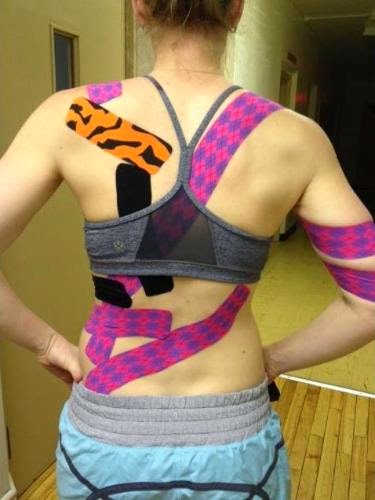When is Gua sha used?
Gua sha is used whenever a patient has pain
in any acute or chronic disorder. There may be aching, tenderness and/or a
knotty feeling in the muscles. Palpation reveals sha when normal finger
pressure on a patient's skin causes blanching that is slow to fade. In addition
to resolving musculo skeletal pain, Gua Sha is used to treat as well as prevent
common cold, flu, bronchitis, asthma, as well as any chronic disorder involving
pain or inflammation.
Where is Gua sha applied?
Gua sha can be done almost anywhere on the
body but is typically applied at the back, neck, shoulders, chest, abdomen,
buttocks and limbs. Gua sha is also applied over the joints but not without
first treating the channels that supply a joint area.
How is Gua sha applied?
The area to be treated is lubricated with
oil or balm*. The area to be treated is press-stroked in one direction with a
round-edged instrument until the petechiae are completely raised. Exactly how
to safely apply Gua sha, to whom and when is learned from a teacher of Gua sha.
(insert image of press stroking)
What kind of lubricant is used for Gua sha?
What kind of instrument is used for Gua sha?
A soupspoon, coin, slice of water buffalo
horn or jade are used in Asia.
What does the type of sha indicate?
The color of the Sha is both diagnostic and
prognostic. A practitioner trained in Gua sha notes the color of the sha, its
quality and how fast it fades in making a ‘diagnosis’, that is, in assessing the
location, quality, mutability and pattern of a presenting problem.
How fast will the petechiae fade?
The Sha petechiae should fade in 2-4 days.
If it is slower to fade, indicating poor Blood circulation, the practitioner
must ascertain whether it is deficiency of Blood, Qi or Yang, a deeper
stagnation or organ deficiency at the root.
What are the benefits of Gua sha?
Modern research has confirmed Gua sha reduces pain, inflammation while stimulating an immune protective response that can persist for days following treatment. Gua sha is a valuable treatment for musculoskeletal problems as well as internal organ conditions including respiratory and hepatic inflammation.
Is Gua sha safe?
Gua sha is safe when done by someone
properly trained, and it is serious medicine. Knowing when to use it and what
to expect from treatment is as important as good technique. Because Gua sha
lifts cells out of the vascula and some of those cells may express from the
skin, a practitioner of Gua sha must respect guidelines of safety to eliminate
risk of exposure to blood borne pathogens.
Gua Sha is a technique that is designed to
remove scar tissue and adhesions and thus improving blood flow and muscle
movement.













